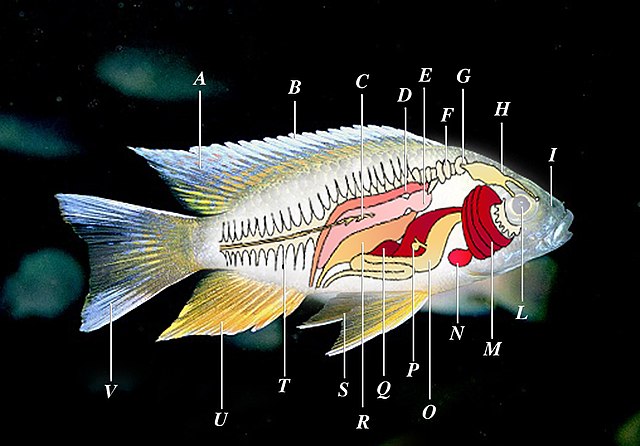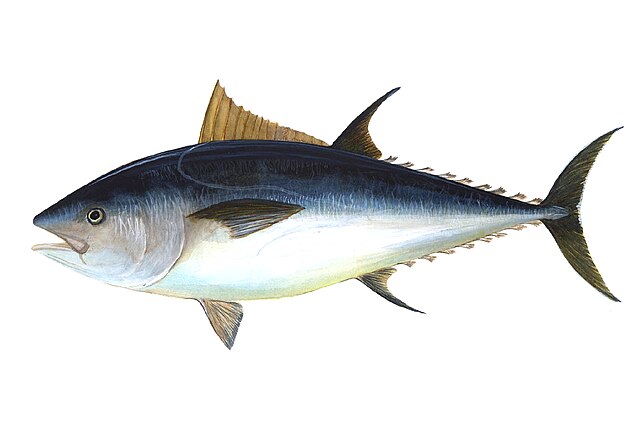Teleostei, members of which are known as teleosts, is, by far, the largest infraclass in the class Actinopterygii, the ray-finned fishes, and contains 96% of all extant species of fish. Teleosts are arranged into about 40 orders and 448 families. Over 26,000 species have been described. Teleosts range from giant oarfish measuring 7.6 m (25 ft) or more, and ocean sunfish weighing over 2 t, to the minute male anglerfish Photocorynus spiniceps, just 6.2 mm (0.24 in) long. Including not only torpedo-shaped fish built for speed, teleosts can be flattened vertically or horizontally, be elongated cylinders or take specialised shapes as in anglerfish and seahorses.
Teleost
Skull and jaw anatomy
Caudal skeleton showing symmetrical (homocercal) tail
Aspidorhynchus acustirostris, an early teleost from the Middle Jurassic
Actinopterygii, members of which are known as ray-finned fish or actinopterygians, is a class of bony fish that comprise over 50% of living vertebrate species. They are so called because of their lightly built fins made of webbings of skin supported by radially extended thin bony spines called lepidotrichia, as opposed to the bulkier, fleshy lobed fins of the sister class Sarcopterygii. Resembling folding fans, the actinopterygian fins can easily change shape and wetted area, providing superior thrust-to-weight ratios per movement compared to sarcopterygian and chondrichthyian fins. The fin rays attach directly to the proximal or basal skeletal elements, the radials, which represent the articulation between these fins and the internal skeleton.
Actinopterygii
Anatomy of a typical ray-finned fish (cichlid) A: dorsal fin, B: fin rays, C: lateral line, D: kidney, E: swim bladder, F: Weberian apparatus, G: inner ear, H: brain, I: nostrils, L: eye, M: gills, N: heart, O: stomach, P: gall bladder, Q: spleen, R: internal sex organs (ovaries or testes), S: ventral fins, T: spine, U: anal fin, V: tail (caudal fin). Possible other parts not shown: barbels, adipose fin, external genitalia (gonopodium)
Tuna are streamlined for straight line speed with a deeply forked tail
Cod have three dorsal and two anal fins, which give them great maneuverability








